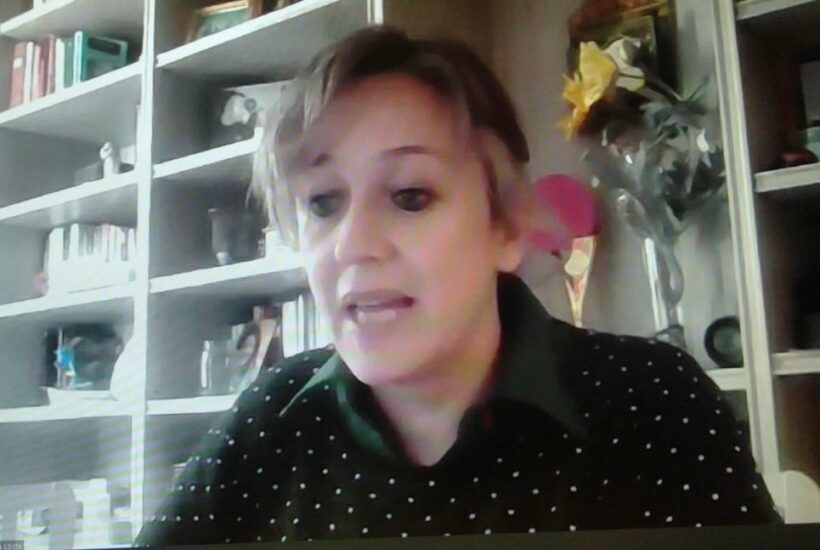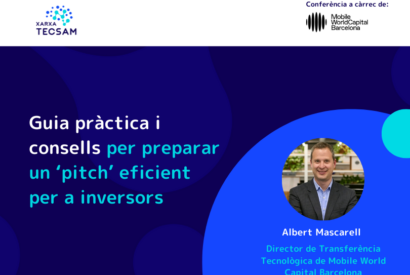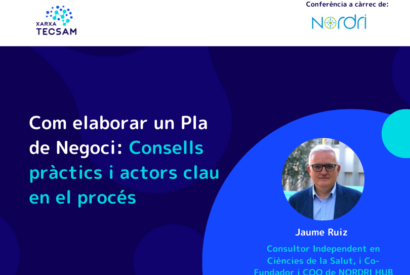5 slogans and naming, at the core of a great communication strategy
Do you use communication tools or strategies to disseminate your research more effectively? Some keys at the XVII B&L from the hand of Eva Loste from Ubik Media.

Creating a strong brand identity is key to effectively transfer and deliver your research to the audience.
Communication can be an ally when it comes to transferring researchers’ scientific findings and projects. The identification of 5 slogans or strategic messages can facilitate the dissemination of research and connect with the audience, as explained by Eva Loste from Ubik Media at the XVII B&L.
This virtual session, held on Wednesday 12 April, addressed the importance of creating a brand identity to differentiate ourselves from the competition and reach the audience more effectively. In this sense, building a story and corporate image is key to achieving this goal.
The communication expert and CEO and co-founder of the communication agency Ubik Media referred to four key and transversal elements of any communication strategy to be taken into account by the research community: the audience, the message, the medium and the plan.
Through a participative session, accompanied by examples and practical cases, the participants were able to learn from an expert in the field about tools and good practices to get the most out of communication. Watch a video of the session:
Message and audience, two-way communication
Nameing is a key tool to be taken into account to create effective communication in terms of message. According to Loste, “what does not have a name, does not exist”, hence the importance of naming researchers’ innovations, methodologies and newly created forms of diagnosis and reiterating them to the audience.
Similarly, storytelling, understood as the creation of a narrative or story associated with the project, is another valuable resource that not only facilitates the understanding of the research activity, but also allows connecting and building a common and lasting language with the audience.
The aim is, in any case, to adapt the message to be conveyed to the objectives, needs and interests of the target audience. If the communication is able to respond to these motivations, while at the same time creating an experience and/or emotionality linked to the project, it will be more likely to capture the audience’s attention. Creating a two-way relationship is key.
Communication channel
The channel used is a determining factor in whether or not a message gets through to the audience. Thus, the medium shapes the content of what you want to explain.
Eva Loste has listed a series of good practices or tips to get the most out of corporate communication through social networks:
- Be brief.
- Convey a message through a publication.
- Place more importance on what rather than who or how.
- Mention people.
- Accompany the copy with visual content.
- Humanize the tone: we should not forget that there are people on the other side of the screen.
- Share content frequently.
- Create engagement: interact (recommend, comment, like) with other publications.
- Work on the messages.
- Establish a powerful call to actioion.
Communication plan
For communication to be effective, it is not a matter of carrying out one-off actions, but must be part of a planned and systematised strategy that is sustainable over time.
Thus, depending on the objective pursued (attracting investors, talent, internationalisation, etc.), one specialised communication or another will be developed, which will be accompanied by this “map of actions” that must be implemented constantly and as part of a whole.
When planning, the brand identity (key to customer loyalty), which sales and promotion channels will be used, the necessary resources and ways to obtain them, among others, must be considered.
Couldn’t attend the XVII virtual meeting of B&L, titled “Communication and Transfer: Practical Tools for Researchers”? Or do you want to watch it again? The video recording of the session is now available on demand.

